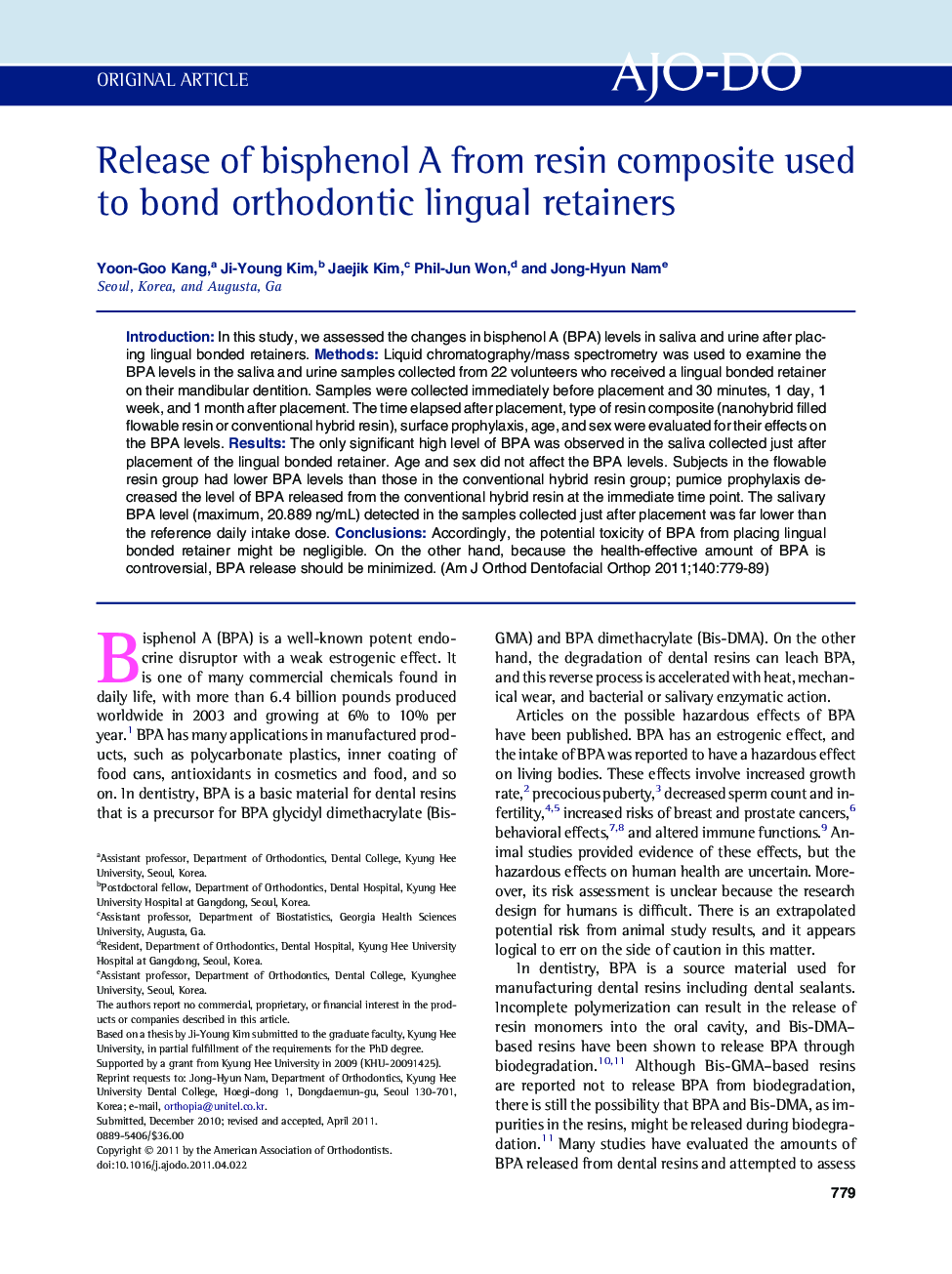| Article ID | Journal | Published Year | Pages | File Type |
|---|---|---|---|---|
| 3117167 | American Journal of Orthodontics and Dentofacial Orthopedics | 2011 | 11 Pages |
IntroductionIn this study, we assessed the changes in bisphenol A (BPA) levels in saliva and urine after placing lingual bonded retainers.MethodsLiquid chromatography/mass spectrometry was used to examine the BPA levels in the saliva and urine samples collected from 22 volunteers who received a lingual bonded retainer on their mandibular dentition. Samples were collected immediately before placement and 30 minutes, 1 day, 1 week, and 1 month after placement. The time elapsed after placement, type of resin composite (nanohybrid filled flowable resin or conventional hybrid resin), surface prophylaxis, age, and sex were evaluated for their effects on the BPA levels.ResultsThe only significant high level of BPA was observed in the saliva collected just after placement of the lingual bonded retainer. Age and sex did not affect the BPA levels. Subjects in the flowable resin group had lower BPA levels than those in the conventional hybrid resin group; pumice prophylaxis decreased the level of BPA released from the conventional hybrid resin at the immediate time point. The salivary BPA level (maximum, 20.889 ng/mL) detected in the samples collected just after placement was far lower than the reference daily intake dose.ConclusionsAccordingly, the potential toxicity of BPA from placing lingual bonded retainer might be negligible. On the other hand, because the health-effective amount of BPA is controversial, BPA release should be minimized.
